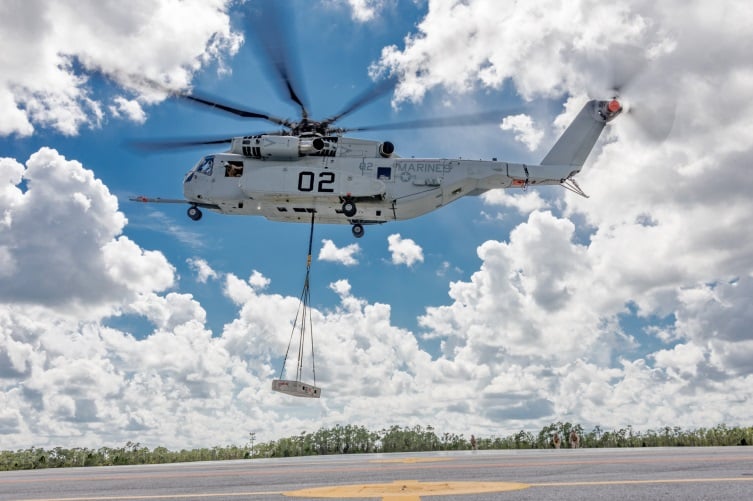
This post has been updated to include a statement by Sikorsky and the NAVAIR program office.
Naval Air Systems Command awarded Sikorsky $304 million for the first two CH-53K King Stallion heavy-lift helicopters for the Marine Corps.
Sikorsky, a Lockheed Martin company, will build these two Lot I aircraft in its Stratford, Conn., facility. The aircraft should deliver in 2020, according to a Sikorsky statement following the contract modification award.
“We have just successfully launched the production of the most powerful helicopter our nation has ever designed,” Col. Hank Vanderborght, U.S. Marine Corps program manager for the Naval Air Systems Command’s (NAVAIR) heavy-lift helicopters program office, PMA-261.
“This incredible capability will revolutionize the way our nation conducts business in the battlespace by ensuring a substantial increase in logistical throughput into that battlespace. I could not be prouder of our government-contractor team for making this happen.”
The Pentagon formally approved the heavy-lift helo to enter low-rate initial production on April 4, after the Marines put the first four CH-53K engineering and development models through a rigorous test program that included lifting a required 27,000 pounds externally and flying 110 nautical miles, among other requirements.
Since that Milestone C decision was approved, Sikorsky has continued testing, conducting a first “cross country” flight from Sikorsky’s Development Flight Center in West Palm Beach in Naval Air Station Patuxent River, Md. The four EMD vehicles have totaled more than 450 hours of flight tests so far.

“This first movement of CH-53K flight testing to our customer’s facility denotes that the aircraft have achieved sufficient maturity to begin transitioning the focus of the test program from envelope expansion to system qualification testing,” Michael Torok, Sikorsky vice president of CH-53K programs, said in a July news release.
“This has been the plan from the beginning and is another important step toward getting these fantastic aircraft into the hands of the U.S. Marine Corps.”
Sikorsky will eventually reach a build rate of 24 helos a year after full-rate production begins in 2020, Torok told reporters in April.
Vanderborght told reporters at the same event that the new aircraft would not only lift more than the legacy CH-53E but would also be more reliable and more maintainable, leading to a higher sortie-generation rate for the Marine Corps.
According to the Sikorsky news release, the helicopter’s cabin is a foot wider, which allows cargo pallets or humvees to be stowed internally while the troop seats remain installed. Its external hook system allows the helo to lift three separate payloads at the same time. And fly-by-wire flight controls and other automation reduces the workload for pilots to allow them to focus more on the mission and less on controlling the helicopter.
After buying the first two helos now, in Fiscal Year 2017, the Marine Corps requested funding for four in FY 2018, with funding for two additional aircraft included in the service’s unfunded requirements list.





